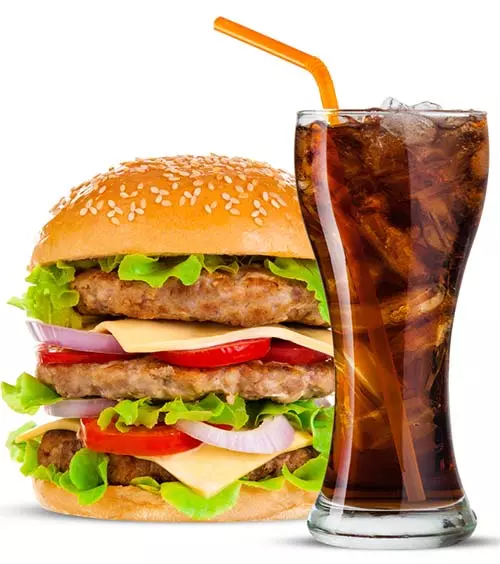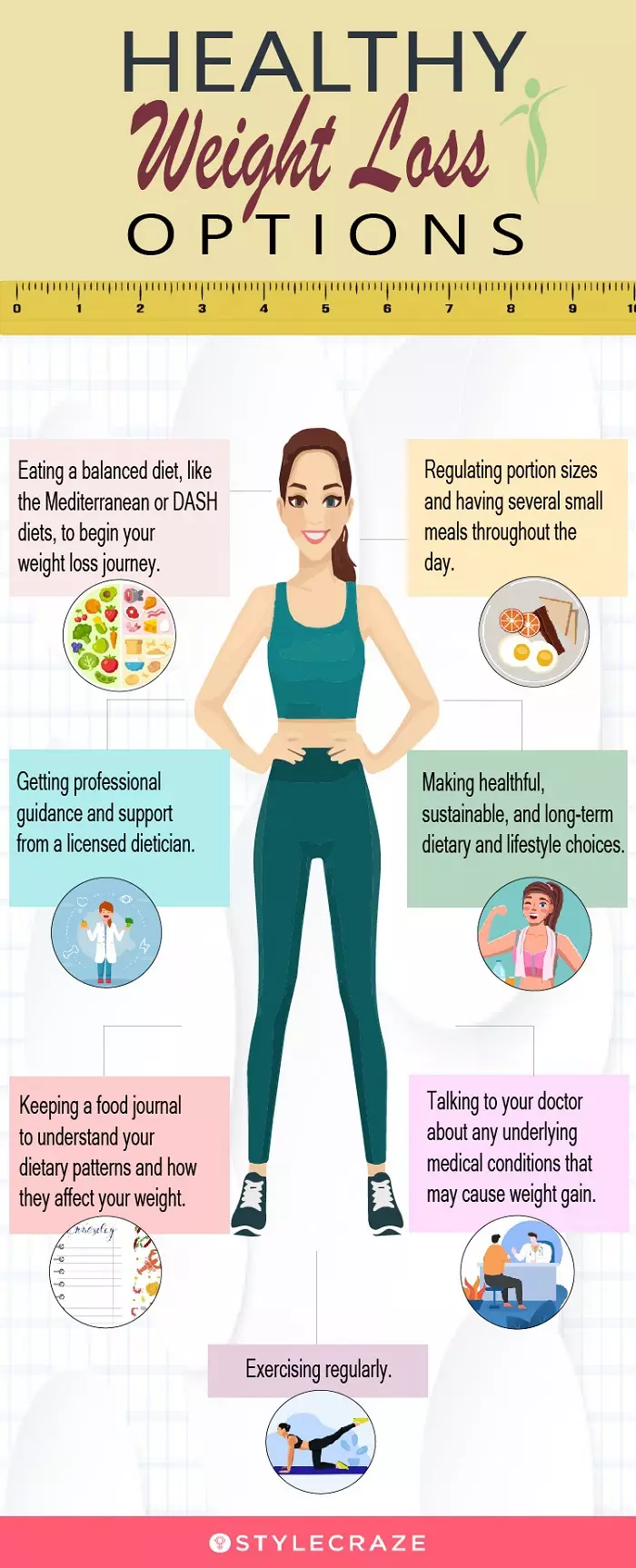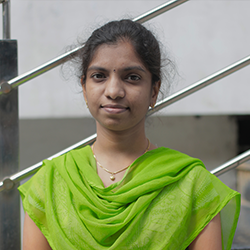Clearly, alternate-day fasting or fasting twice a week will help you lose weight as well as improve your wellbeing. Here’s your ultimate guide to the OMAD diet, how it will work for you, what to eat, what foods to avoid, and the dos and don’ts. Take a look!
What Is The One Meal A Day Diet?
The one meal a day or OMAD diet, as the name suggests, requires the dieters to consume one meal per day instead of three meals and two-three snacks in a day. This, in turn, restricts the calories you consume throughout the day. As a result, you will lose weight, won’t feel bogged down, and your digestion improves. All you are required to do is consume nutritious foods during the one hour window and fast the other 23 hours. It is almost in line with the warrior diet plan, which alternates between long periods of fasting and short and restrictive periods of eating. Most dieters eat during dinner time, but you can eat according to your convenience and preference. In some cases, dieters may be allowed to drink green tea (0 cals) or black coffee (3 cals) and have a few solid foods like an egg or an apple during the day. This is done for the satiety and safety of the dieter since each body responds differently to the same diet plan. So, why do we recommend this seemingly extreme diet? Find out next.
How Does The One Meal A Day Diet Work?
The one meal a day diet works on the principle of calorie restriction and consuming nutritious and low-calorie food one time of the day (or night) to induce autophagy. When you fast for 23 hours, your body will use the energy reserve (fat) as fuel. Taking the readily available energy in the form of carbs, fruit sugar, etc. aids fat mobilization. It also prevents constipation and improves digestion and absorption, thereby positively influencing fat loss. However, the one hour window that you get can become your enemy if you don’t watch what you eat. Here’s a list of foods that you can consume.
Foods To Eat On OMAD Diet
Veggies – Carrot, broccoli, cabbage, cauliflower, beetroot, turnip, scallions, purple cabbage, Chinese cabbage, lettuce, bell peppers, sweet potato, white potato with peel, spinach, and kale.
Fruits – High GI fruits like grapes, watermelon, mangoes, and pineapple, and canned fruits should be consumed in limited amounts.
Protein – Chicken breast, lean cuts of pork and beef, fish, mushroom, beans and legumes, tofu, and eggs.
Dairy – Full-fat milk, full-fat yogurt, cheddar cheese, feta cheese, buttermilk, homemade ricotta cheese, and cottage cheese.
Whole Grains – Brown rice, black rice, broken wheat, millet, quinoa, barley, and sorghum.
Fats & Oils – Olive oil, rice bran oil, sunflower butter, peanut butter, edible grade coconut oil, and almond butter.
Nuts & Seeds – Almond, walnut, pecan, pine nuts, pistachios, macadamia, sunflower seeds, pumpkin seeds, and melon seeds.
Herbs & Spices – Cilantro, mint, dill, fennel, rosemary, thyme, oregano, garlic, ginger, onion, coriander, cumin, turmeric, cayenne pepper, black pepper, white pepper, chili flakes, allspice, star anise, cardamom, garlic powder, and clove.
Beverages – Water, homemade lemonade, homemade electrolyte, coconut water, freshly pressed fruit juice, and cold pressed juices.
So, you see, you have a lot of options to choose from and make delicious food at home with minimum fuss. However, you should be aware of what you should avoid and get started on meal planning to meal prep accordingly and maintain a healthy dose of nutrition. Here’s a list of foods you must avoid.
Foods To Avoid On OMAD Diet
Fruits – High GI fruits like grapes, jackfruit, mangoes, and pineapple should be consumed in limited amounts. Protein – Fatty cuts of pork and beef and bacon. Dairy – Low-fat milk, low-fat yogurt, flavored yogurt, and cream cheese. Whole Grains – White rice. Consume in limited quantities and include at least five types of veggies with it to balance out the GI. Fats & Oils – Hemp seed oil, dalda, lard, vegetable oil, butter, margarine, and mayonnaise. Nuts & Seeds – Cashew nuts Processed Foods – Salami, sausages, fries, ranch dip, bottled jams, and jellies. Beverages – Packaged fruit and vegetable juices, soda, diet soda, and energy drinks. Now that you know what you should eat and avoid, let me tell you how to design your meal so that you don’t lose focus while on the OMAD diet. Scroll down.
What To Include In Your One Meal A Day Diet
Include at least five types of veggies. Consume three types of fruits. Include lean protein sources in your diet. However, once in a while, you can consume a controlled portion of red meat. If you are a vegetarian, consume a good amount of plant protein such as nuts, seeds, kidney beans, garbanzo beans, and whole pulses. Consume half a bowl of curd or a cup of buttermilk to aid digestion. Have a few unsalted nuts. Make sure not to go overboard with them. You can consume a piece of 80% dark chocolate. For other sweet treats, choose fruits and sour cream or yogurt. Or bake and store brownies that contain healthy ingredients and, of course, less sugar. Keep yourself hydrated throughout the fasting phase. You can drink 3-4 cups of green tea during the fasting phase. If you workout, make sure you consume an egg before working out and replenish your electrolyte reserve by drinking coconut water post-workout.
Jonathan Bao, a blogger, shared his experience of eating only 1 meal a day for 15 months. He elaborated on the different foods he ate to gain healthy weight and leg muscle. He said, “I really don’t need to eat that much protein (i.e. meat). You don’t need a lot to build muscle. I’m looking for quality fats, complex carbs that won’t expand too much in my stomach, and a load of vitamins in dark leafy greens and in every color of vegetable and fruit (i).” The following recipe is bound to add a flavorful twist to your diet. Check it out!
OMAD Diet Recipe
Grilled Salmon Bowl With Quinoa And VegetablesIngredients
6 oz. of salmon filet 1 cup of quinoa (cooked) 1 cup of broccoli (steamed) 1/2 cup of roasted bell peppers (sliced) 1/2 avocado (sliced) Olive oil Lemon juice Salt Pepper
Method Besides fasting, do you need to work out while you are on the OMAD diet? Find out in the next section.
Should You Workout While On The OMAD Diet?
Initially, when you fast for such a long duration, you will not have the energy to workout. Plus, mental fatigue will not allow you to put in the effort required for your workout. Do stretching exercises or yoga to keep your muscles active. When you get used to this intermittent fasting, you can slowly include muscle toning workouts to prevent sagging of your skin. However, always consult your trainer to design a workout that works for you, keeping your medical condition and body type in mind. Whether you are on the OMAD diet or not, practice meditation every day. You can do it the traditional way or while taking a walk or running.
Jonathan Boa further added, “That way I start the day with maximum food and use it up as I go. In the late afternoon after food has emptied out of my stomach is my energy peak, and I can work out as hard as I want.” Why should you even choose OMAD diet over any other diet? Let’s find out.
Benefits Of The One Meal A Day Diet
Aids Weight Loss
Scientists believe that modified versions of intermittent fasting can help you lose weight by improving sleep patterns and aiding proper digestion (2).
Improves Health Markers Of Type II Diabetes
Obesity, genetics, and an unhealthy lifestyle are the main causes of type II diabetes. Researchers found that patients with type II diabetes who followed intermittent fasting were able to lose weight, had reduced calorie intake, and lower glucose and insulin levels post meals (3). As intermittent fasting has shown to improve insulin sensitivity, people with a BMI over 25, type 2 diabetes, or prediabetes (who are not on medications for lowering blood sugar) may try it.
Helps Protect The Heart
The best part of intermittent fasting is that it helps reduce visceral fati Fat that wraps around abdominal organs deep inside the body and can increase the risk of diabetes and heart disease. and lowers LDL (bad) cholesterol, which, in turn, improves heart health (4).
Prevents Weight Regain
This is what sets intermittent fasting and the OMAD diet apart from every other diet. Of course, weight loss is a journey with a lot of ups and downs. But if you manage to go on the OMAD diet twice a week, you will be less likely to regain the lost weight (5).
Energizes You
Intermittent fasting will keep you energized throughout the day and improve mindfulness. The main reason for this is that as you get rid of the inflammation-inducing fat deposits, your body starts working better. This, in turn, helps keep your cells active and lowers your fatigue levels.
Does Not Deprive You
When you are on the OMAD diet, you will not feel deprived. You will have a filling, nutritious, and delicious meal that will keep your junk food addiction at bay. Of course, you have to follow a “foods to avoid” list so that you don’t put your heart, liver, and kidneys at risk. It is clear that the OMAD diet can actually work for you if you practice discipline. However, before you start, here are a few things you should keep in mind.
Risks Of Following The One Meal A Day Diet
Sustainability because it is not easy for a first timer. You will feel hungry and restless. You might feel weak. You might feel dizzy and experience brain fog. You will not be able to concentrate properly. Metabolismi Chemical reactions occurring in an organism or a cell in order to generate energy to sustain life. in menopausal women may slow down.
Caution
Since our bodies respond differently to diets, you must talk to your doctor or a registered dietitian before you start following the OMAD diet. Moreover, pregnant and lactating women should not try this diet. Is the OMAD diet suitable for everyone? Sheri Gaw, RDN, CDCES, says, “The one meal-a-day diet is not suitable for everyone as it may lead to nausea, low blood sugar, binge-eating, blood sugar spikes, reduced energy, dizziness, irritability, and constipation.” Studies found that the OMAD diet could increase the risk of all-cause mortality and cardiovascular diseases. Moreover, people who skip breakfast and usually have a lower meal frequency are at an increased risk of developing metabolic syndromes (6), (7). How many calories should I consume in my one meal on the OMAD diet? Gaw says, “The OMAD diet should include at least 1200 calories from nutrient-dense foods such as chicken, fish, beans, eggs, and other sources of lean protein, whole grains such as brown rice, farro, or quinoa, fruits, vegetables, nuts, seeds, and dairy or plant-based milk alternatives.” Is it possible to get enough nutrients from just one meal a day? According to Gaw, “It can be very difficult to consume a balanced diet with sufficient calories in one meal per day. To get everything you need in one meal, it takes diligent planning which is something the average person may not have the bandwidth to do.” How does OMAD compare to other intermittent fasting diets, such as 16/8 or 5:2? “Intermittent fasting diets such as the 16/8 and 5:2 plans allow for a larger eating window and an increased potential to ingest adequate nutritional needs,” says Gaw. How can OMAD be combined with resistance training for optimal results? She says, “Protein and carbohydrates are needed for muscle growth and repair, it is important to time resistance training right before or after eating for best results.” Why am I gaining weight eating one meal a day? It could be because of you opting for high-calorie food options for that one meal every day. Since you are fasting for 23 hours, you might be tempted to load up on heavy, filling, empty calories. How much weight can I lose on OMAD? You can lose upto 15 pounds in a month on the OMAD diet. However, it also depends on your age, metabolism, and fitness levels. Is OMAD better than Keto? OMAD is better than Keto as it doesn’t have any restrictions with respect to macronutrientsi Nutrients used in the most considerable amounts in foods, such as carbohydrates, fat, and protein. or portion control. How hard is OMAD? It is tough to begin with, since you would need to eat just one major meal per day followed by a fasting of 23 hours.
Illustration: One-Meal-A-Day (OMAD) Diet: Benefits & Foods To Eat And Avoid
Discover the amazing benefits of intermittent fasting and the OMAD diet. Learn how to improve your health and wellbeing with these simple lifestyle changes shown in video.






_diet_benefits__foods_to_eat_and_avoid_illustration.jpg.webp)






